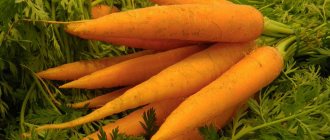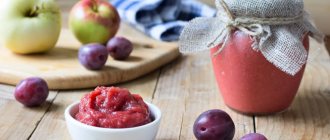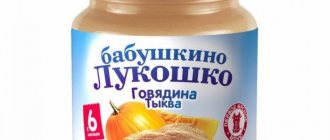Composition and nutritional values
Since ancient times, wonderful, even magical properties have been attributed to egg yolk. This product is a storehouse of useful elements that the human body cannot do without. It contains more than 20 elements , including:
- Vitamins A, B, B2, B4, D;
- Potassium;
- Calcium;
- Magnesium;
- Selenium;
- Iron;
- Chlorine;
- Sulfur;
- Phosphorus;
- Sodium;
- Amino acids.
Each of these elements, as well as the antioxidants contained, are necessary for the normal functioning of the body. Cholesterol is responsible for human hormonal levels.
The yolk mass also contains a substance called lecithin.
Lecithin nourishes nerve and brain cells, and the element is also responsible for the smooth functioning of the liver. Carotenoids play an important role in the human body. They maintain visual acuity.
But there are cases when an egg causes harm to the human body, especially to a baby. This food product is a strong allergen , so you need to be careful when feeding your baby yolk.
The benefits of egg yolk for children's bodies
Egg yolk is quite important for babies. It is a source of a number of microelements, vitamins and nutrients:
- calcium, potassium and phosphorus affect the proper development of bone tissue, hair, teeth and nails. Prevents the development of rickets and other common diseases of the musculoskeletal system;
- lecithin is an essential structural component of cell membranes (especially neurons);
- vitamins A, E, PP, group B.
Quail eggs are an excellent alternative to chicken eggs; it is even believed that they bring even more benefits to children’s bodies.
Chicken or quail, what to choose
Before introducing the yolk into complementary foods for the baby, let's find out what is better to use - a chicken or quail egg.
Some time ago, people ate only chicken, because... Widespread eggs from other birds were difficult to find in stores.
Now everyone knows about the benefits of quail egg yolk. If we analyze the composition of both of their types, quail eggs contain much more useful substances than chicken eggs.
Quail has other positive qualities, namely:
- Small size, allowing you to conveniently feed your baby;
- The shelf life is much longer than chicken;
- The unusual appearance of eggs attracts children.
Regardless of the opinion of most people, quail yolk brings both benefits and harm. Many claim the safety of quail eggs, which do not cause allergies. Unfortunately, it is not. It’s just that an allergic reaction to them is much less common. This is due to their low consumption.
Many people talk about the beneficial properties of raw quail eggs, their advantages over boiled ones. This is where people make a big mistake. Quail eggs, like chicken eggs, should not be eaten raw. They especially should not be given in this form to children. The reason for this is the risk of salmonella colonization through the thin shell.
Which to choose
Let’s answer one of the most common questions: what kind of yolk should you give your child: chicken or quail, which product has more benefits?
Recently, quail eggs have begun to replace chicken eggs and not only in baby food. The thing is that they are less allergenic. It is equally important that they contain additional elements: glycine, lysine, histidine, threonine. The main thing is that they do not contain cholesterol, which will have a detrimental effect on the liver of a newborn; such food will provide only benefits to the body.
One of the few disadvantages of quail eggs is the price of this product; they are much more expensive than chicken eggs. And unfortunately, not all stores sell quail eggs.
Home or industrial
The yolk of domestic chickens has a brighter, almost orange color, while the products of poultry farms are much paler (yellow colors vary in intensity).
There is an opinion about the advantage of domestic eggs over the products of industrial poultry farms. Of course, there is a difference between them.
The first obvious difference is the color of the yolk itself. Domestic ones have a richer color due to the diet of chickens.
There are significant differences between the colors of eggshells. For industrial ones, it is either white or brown. Domestic chickens lay eggs with shells of different colors, as well as different sizes.
In poultry farms, chickens are kept in cages and fed a balanced diet. In addition, chickens are given anti-salmonellosis agents . However, poultry do not receive these drugs. Therefore, it is worth keeping in mind that there is a risk of contamination with salmonella bacteria in domestic eggs. If an infant has blood in their stool, this is an alarming symptom that you need to pay attention to.
An industrial egg or an egg from a domestic chicken, one way or another, contains a large amount of nutrients and beneficial substances useful for the human body. Which one to give to children is the choice of the parents themselves, their taste preferences and habits.
Age for yolk injection
Egg yolk contains cholesterol and fats, so it is quite a heavy product, especially for the baby’s immature digestive system. It should not be given until six months. Such a load on a child’s body can become unbearable. Indigestion, rash, abdominal pain, vomiting or allergies sometimes occur after eating the yolk. The latter may cause particular concern for parents.
If the baby is allergic to medications or food, then the introduction of yolk complementary foods should be carried out after 10 months. In this case, heredity is of great importance. If one of the parents is intolerant to yolk, then the period of its introduction is postponed to a year. In this situation, the benefit of the product does not justify the risk.
After introducing the yolk into the diet, you can move on to including protein in your food.
There are WHO standards according to which the yolk is administered:
- when breastfeeding - after 8 months;
- with artificial - 7 months.
The older generation, who raised their children in other conditions, will be advised to start complementary feeding at 3-4 months. However, at this age, the baby’s stomach lacks enzymes that will help him digest such heavy food. This can lead to serious gastrointestinal diseases.
When to start introducing eggs into your baby's diet?
Children begin to introduce yolk into complementary foods already in the eighth month of their life. To do this, the egg must be hard-boiled. The baby is first given a small grain, mixed with vegetables.
Gradually increase the amount to a quarter of the total mass. After a year, the daily norm increases to half.
But when you introduce yolk into complementary foods in large doses, make sure that the baby does not have an allergic reaction . When it is not detected, the amount is raised to half a day. The baby should eat it no more than 2-3 times a week.
How to properly introduce yolk into complementary foods
Egg yolk should be introduced into the baby's diet very carefully.
Make sure that the egg you use is fresh. It is advisable to use homemade, well-known, proven testicles for the first time. If you do not have this opportunity, then when buying them in a store, you can check the freshness of such eggs at home. You will need to place the egg in a container of cold water. Fresh and ideal for a baby, the egg will sink immediately without stopping for a second on the surface.
Do not give your baby the yolk at the same time as other fatty foods. This will make it difficult for the liver to work.
It is recommended to give an egg, namely the yolk, for the first time in the morning, before the main meal. And it’s worth observing the reaction for at least two days.
Let's take a look at the rules for introducing eggs:
- Wash the egg thoroughly (clean it of dirt and possible bacteria).
- Boil the egg hard (10 minutes after it boils).
- Let it cool down.
- Knead the yolk and mix with mother's milk or formula, or with porridge.
There is such a scheme:
- First, we give the baby a fifth of the yolk.
- After he has adapted, we give the fourth part.
- The next stage is the third beat.
- Then, until the age of one, we give half the yolk.
And most importantly, do not give yolk to children under 3 years of age more than twice a week.
You can mix the yolk with porridge, to which the baby has already been able to adapt.
Older children, starting from the age of one and a half years old, can start giving soft-boiled eggs, and from two years old - an omelet.
When my husband and I added yolk to the child’s diet, everything went without complications. Not only did he respond well to it, but he also fell in love with it greatly. I added the yolk to the vegetable puree. And at one year old, he already independently picked it up in its entirety and ate it with great appetite.
How to prepare yolk feeding and what to give it with
Before introducing the yolk into the little person's food, you need to boil the whole egg for 10 minutes. Cool it, remove the shell, divide it in half, take out the yolk mass, making sure that there is not the slightest grain of protein on it.
The first time the baby is given a very small piece of yolk pulp, grind it and add it to porridge or pureed vegetables. The gruel can be diluted with mother's milk or baby food, which he constantly eats. How to introduce complementary foods during breastfeeding, a separate article talks about the intricacies of such an important moment.
When should you add yolk to your baby's diet?
The yolk should be added to the main diet after the child has already adapted to vegetables and cereals.
Doctors advise introducing it no earlier than seven months of age, since this product is difficult for the baby’s digestive system. In particular, due to the fact that a fifth consists of fat.
It turns out that yolk is very rare, but can cause irritation throughout the child’s body, and even vomiting. If this product is positively received, after two days you can try to increase the dose, but just a little. A one-year-old child should consume no more than half the yolk. And only after reaching two years old can a baby safely eat a whole egg.
I decided to introduce yolk into complementary foods when my son turned 8 months old.
Recipes for healthy dishes that can be given as complementary foods
All of the recipes below are simple and quick to prepare, while these ingredients minimize the risk of allergic reactions.
Mashed potatoes
Ingredients
- 110 g potatoes;
- 3 g butter;
- 40 g milk;
- ¼ egg yolk.
Cooking method
To prepare the dish, potatoes should be boiled with their skins on. Clean it and grind it very thoroughly until it has a homogeneous consistency. Continuing to stir, add milk and butter. Salt the puree a little. Then add the required portion of yolk.
Carrot puree
Ingredients
- 100 g carrots;
- 3 g butter;
- 25 g milk;
- a pinch of salt;
- a pinch of sugar;
- ¼ egg yolk.
Cooking method
Wash the carrots, remove the skin, chop and boil until fully cooked. Then grind it until smooth, add sugar, salt, milk. Boil the resulting mixture for another 2 minutes. Put butter and grated yolk there.
Vegetable puree
Ingredients
- 1 small zucchini;
- 1 small carrot;
- 75 g breast or regular milk;
- 1 tsp. fructose;
- ¼ egg yolk.
Cooking method
Chop the vegetables and pour into a cooking container. Pour in liquid and simmer until tender. Strain, add milk, fructose, mix with a blender. Add the yolk mass.
It is important to remember that dishes prepared for your baby cannot be stored and can only be consumed when freshly prepared.
Feeding your baby with yolk
The yolk represents 33% of the liquid part of the egg. It is more nutritious than protein (8 times). The yolk of a large chicken egg contains fats, proteins, carbohydrates, cholesterol (4.51 g, 2.7 g, 0.61 g, 139 mg, respectively).
It also contains:
- Minerals – P, Ca, Fe, Mg, K, I, Na, S.
- Vitamins (group B, biotin, vitamins A, D, E, folacin).
- Folic acid.
- Fatty acid.
- Lecithin.
- Cholesterol.
The combination of vitamins D, Ca, K and P allows the baby’s bones, teeth, nails and hair to develop properly. Limit the risk of developing pathologies such as rickets. Thanks to them, diseases of the musculoskeletal system are prevented.
Lecithin is included in the structure of cell membranes, ensures the proper development of the central nervous system, helps improve memory, and strengthens the liver.
Vitamin E and iron protect against anemia and improve cardiac activity.
Cholesterol is responsible for the formation of strong immunity in a child, as well as the proper functioning of the endocrine system, and takes part in the synthesis of vitamin D.
About the dangers of egg whites for an infant: allergy and its signs
It is not recommended to feed babies with protein . It doesn’t matter whether it comes from chicken or quail. Both proteins are difficult for the child’s body to perceive; his tiny organs are still developing and are not able to efficiently process and help absorb such heavy food.
After careful heat treatment, this product can be fed to the baby only after the first year of life.
Allergies in infants are considered the most dangerous pathology. After all, having seen the first signs of an allergic reaction, parents will have to exclude a large number of products that contain chicken eggs from the baby’s diet.
The child himself will have to beware of them all his life. Signs of an allergy include:
- Skin rashes, a photo of a rash on the face of a baby and its causes you can read here;
- Diarrhea;
- Abdominal pain;
- Difficulty breathing;
- Suffocation;
- Itching;
- Vomiting (how to stop vomiting can be found in the article at the link).
There are cases when a baby begins to have an allergic reaction to the smell of eggs that comes from cooked dishes. Fried pancakes, omelettes, and cheesecakes can cause a reaction. You should also be careful when introducing juices into your child’s diet. Which of them are suitable first of all, what portion should be, you will learn all this in this publication.
Prohibited dishes containing egg or its derivatives include:
The egg must be boiled in boiling water for at least 10 minutes.
- Tartar sauce, mayonnaise;
- Breakfast cereals;
- Ice cream, waffles;
- Pasta;
- Flour products;
- Meat sausages, rolls, sausages.
By the way, many vaccinations are contraindicated for such children . The reason for this is the composition of the vaccines, which includes a chicken embryo.
The drugs can be dangerous to the baby's health. In addition, it is impossible to get rid of allergies.
Neither folk remedies nor traditional medicine help here. Using anti-allergy medications can only temporarily relieve symptoms.
Chicken or quail - which eggs are better for a child?
Quail and chicken eggs differ from each other not only in appearance, but also in composition.
Quail eggs contain cholesterol and are considered more tasty than chicken eggs.
Another big advantage is that quails do not suffer from infectious diseases and salmonellosis.
They are considered strong immunomodulators and are used in the diet of people suffering from anemia, chronic bronchitis, and hypertension. Read about the symptoms and signs of salmonellosis in children and adults in the article at the link.
This product is considered dietary and must be present on the menu of a small family member in sufficient quantities. Regular consumption of this product helps improve digestion processes in the body, this fact is very important for children, since their digestive system is unstable.
It is also hypoallergenic; quail egg white contains a specific substance, ovomucoid. For medical purposes, its extract is extracted and used to produce anti-allergy drugs. You can find out what hypoallergenic formulas for newborns are from the article at the link.
Thus, it is better to try the first feeding of a child with yolk from this type of egg.
conclusions
In conclusion of the above, it should be noted that consuming yolk is of great benefit to the baby’s body, but extreme caution should be used when preparing food. An overdose can lead to allergies, which can have consequences in the baby’s later life.
In addition, a negative reaction can occur on its own. To avoid complications, it is necessary to monitor the baby’s health when introducing new foods to the diet.
Dr. Komarovsky talks about the intricacies of introducing a child’s first complementary foods:
General rules for introducing complementary foods
Introducing complementary foods into a child’s diet is not at all difficult, the main thing is to do it on time. To feed children, you need to choose only the freshest foods. The cooking procedure also has its own characteristics. A very important point is the rule of gradual introduction of products. A new type of food is introduced only when the body has become accustomed to the previous one.
Pediatricians believe that the optimal age for introducing complementary foods is 5-6 months. Moreover, the body of a bottle-fed child is ready for this a little earlier, and a breast-fed child’s body is ready for this a little earlier.
Sometimes the first attempt to introduce complementary foods ends in failure, the baby refuses the new product and becomes capricious. Under no circumstances should he be forced. You need to try again only after a few days.
The yolk is not introduced into complementary foods until the child’s body gets used to cereals, vegetables, fruits and meat. Dishes are introduced based on the condition of the baby’s intestines. For frequent constipation, the optimal complementary foods are fruits and juices. This normalizes intestinal motility and makes it possible to diversify the baby’s diet with vegetables. For frequent disorders, it is better to start with cereals. It can be rice, buckwheat, corn or oatmeal without sugar.
At about the 8th month, you can give your baby boiled meat, crushed to a puree. After another week or two - fermented milk products. After this, the yolk can be introduced into complementary foods.
Useful: How to organize the diet of a nursing mother correctly?
Egg yolk is an unusually nutritious product, it contains a lot of useful substances.
How to prepare yolk for complementary feeding
Parents should remember that eggs as complementary foods require careful preliminary preparation. Egg shells can be contaminated with infectious agents such as salmonella. Therefore, it is extremely important to follow simple rules:
- Choose only fresh eggs for boiling without external contamination or damage. The fresher the egg, the less chance of getting sick. You can check the freshness of an egg by placing it in a glass of cold water. If it remains lying on the bottom in a horizontal position, then the egg is fresh. Slightly raised at an obtuse angle upward, can also be used as complementary food. An egg that floats to the surface should absolutely not be used.
- Eggs should only be stored in the refrigerator (not in the door), pointy end down. The shelf life of dietary eggs is up to 7 days, table eggs from 8 to 25 days.
- After purchasing, rinse the egg thoroughly with cold running water.
- cook the chicken egg for 10 minutes from the moment the water boils completely. Do not give your child raw, soft-boiled or fried eggs.
- Do not allow the chicken egg to be overcooked. Cook for no more than 10 minutes, as the taste of the yolk deteriorates and it acquires an unsightly dark green color.
At what months can you give the yolk?
According to WHO (World Health Organization) recommendations, it is extremely important for a child to be exclusively breastfed for the first six months.
From 6 months of age, you can introduce egg yolk into your child’s diet. Its earlier introduction often leads to allergic reactions due to the high sensitizing activity of this product (the occurrence of allergies). “Modern principles and methods of feeding children in the first year of life. Guidelines 99/225".
The recommended period for introducing the yolk is from 6 to 8 months.
However, many parents justifiably shift the date of introducing egg yolk into the baby’s diet from the sixth to the seventh, and even the eighth month of the child’s life, that is, among Russian families there is a tendency towards a later (compared to the recommended) introduction of egg yolk into the baby’s diet. The average period for introducing egg yolk into complementary foods is 7 months.
Most often, the risk of allergic reactions is considered the main reason for the later administration of yolk or even its exclusion in the first year of life in healthy people. At the same time, if there are no foods in the child’s diet that are the main sources of vitamin D (egg yolk), vitamin D deficiency (calciferol) occurs and rickets develops.
Also, according to the European Society of Pediatric Gastroenterologists, Hepatologists and Nutritionists (ESPGHAN), there is no convincing scientific evidence that avoiding or late introducing potentially allergenic foods (yolk or fish) minimizes the development of allergies in healthy children.
By the age of one year, almost all healthy children have a chicken or quail egg yolk in their diet.
At the same time, children of the first year of life with food allergies are not given egg yolk in complementary foods.
For children with cystic fibrosis (a severe hereditary disease in which internal organs that secrete mucus are damaged), yolk is introduced into the baby's diet at the age of 5 months. At the same time, the start of complementary feeding is shifted to an earlier date than in healthy children: complementary feeding begins at 4-5 months, with the introduction of solid complementary foods (for example, porridge).
For children with galactosemia (a rare hereditary disease in which metabolism is disrupted and an abnormal process of metabolism of carbohydrates galactose (the main source of energy for the body) occurs), egg yolk is introduced only in the second year of life and no more than two to three times a week.
I would like to note that for quite a long time the child was fed almost from birth, so fruit juices were given already from the age of one month, and egg yolk from 3-3.5 months of life.
Allergy risk
As you know, in most cases when children develop an allergy to eggs, protein becomes the culprit. But there are cases when the yolk also becomes a source. As a rule, two days of observation are enough for the allergy to manifest itself. If it is absent, then you can safely continue to introduce the yolk into the diet, gradually increasing the portion.
What are the symptoms that the yolk has nevertheless caused a response from the body:
- Change in skin color.
- Hyperemia of the cheeks and buttocks.
- The appearance of areas of peeling.
- Formation of a rash that may cause severe scratching.
- Detection of swelling of the perioral area.
- Painful sensations in the tummy. Manifested by the child's capriciousness. May jerk legs sharply.
- Disturbances in the intestines. Manifestation: disturbances in the consistency and color of stool.
If you experience any symptoms, you should immediately stop taking the yolk. If necessary, take an antihistamine. And you will have to postpone acquaintance with the yolk until one year old, not earlier.
There is also an opinion that quail egg yolks are hypoallergenic. If you already know that the baby is prone to an atypical reaction to the introduction of new products, then you should start your first acquaintance with the yolk with a quail egg. Although this does not provide a 100% guarantee that there will be no allergic reaction.
Eggs and the yolk in particular are considered one of the most valuable products and must be present in the life of a baby if administered correctly. They will deliver multivitamins, minerals, and proteins to your child’s body. Don’t forget that the yolk is the first thing on your baby’s menu, as it is less allergenic than the white.











